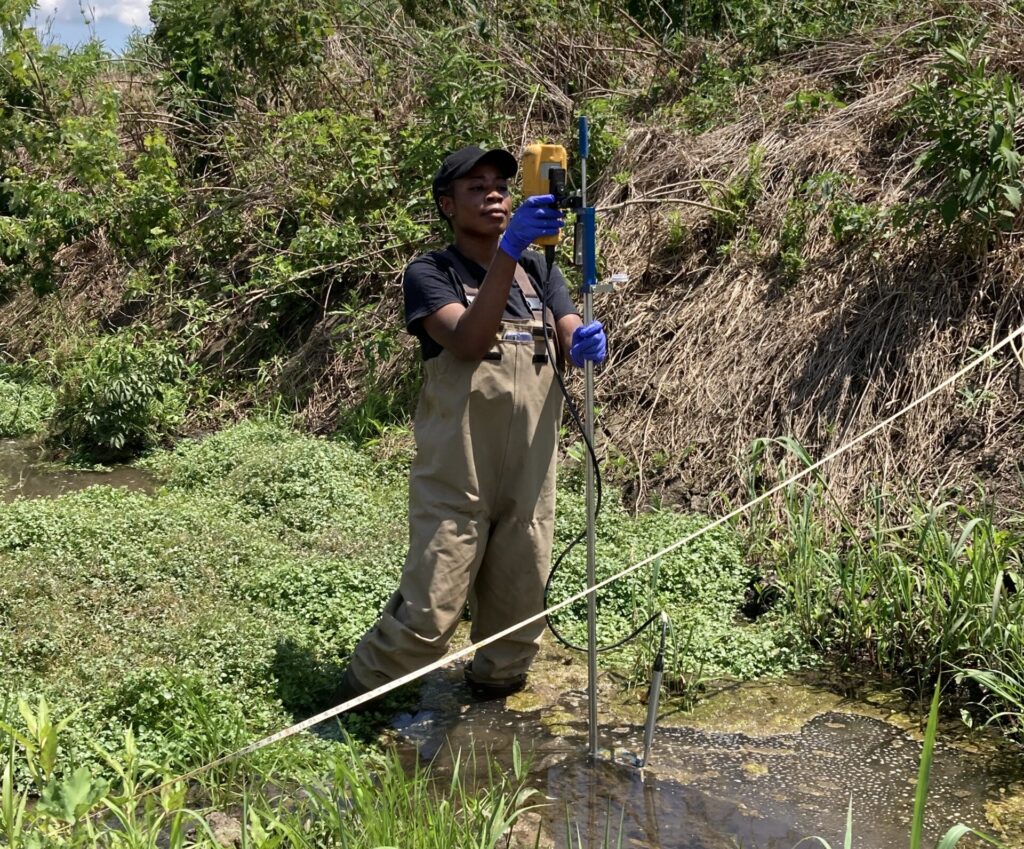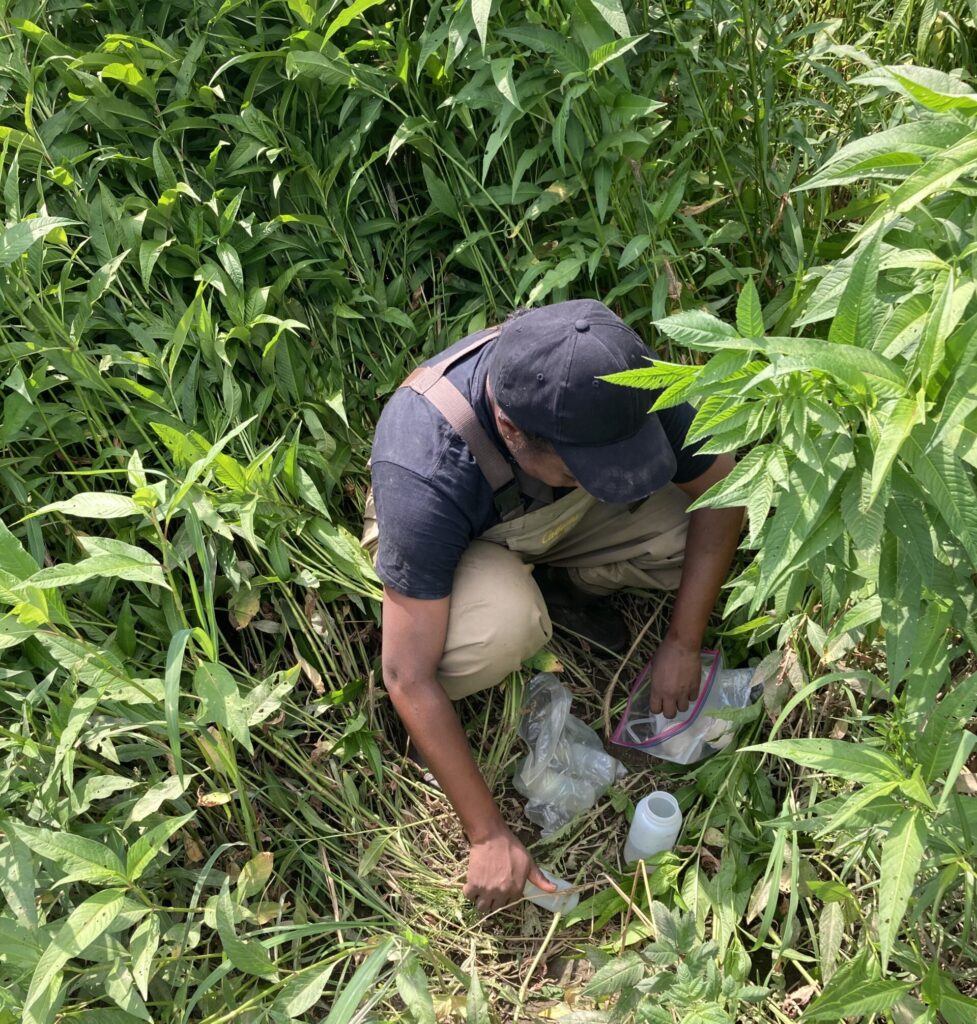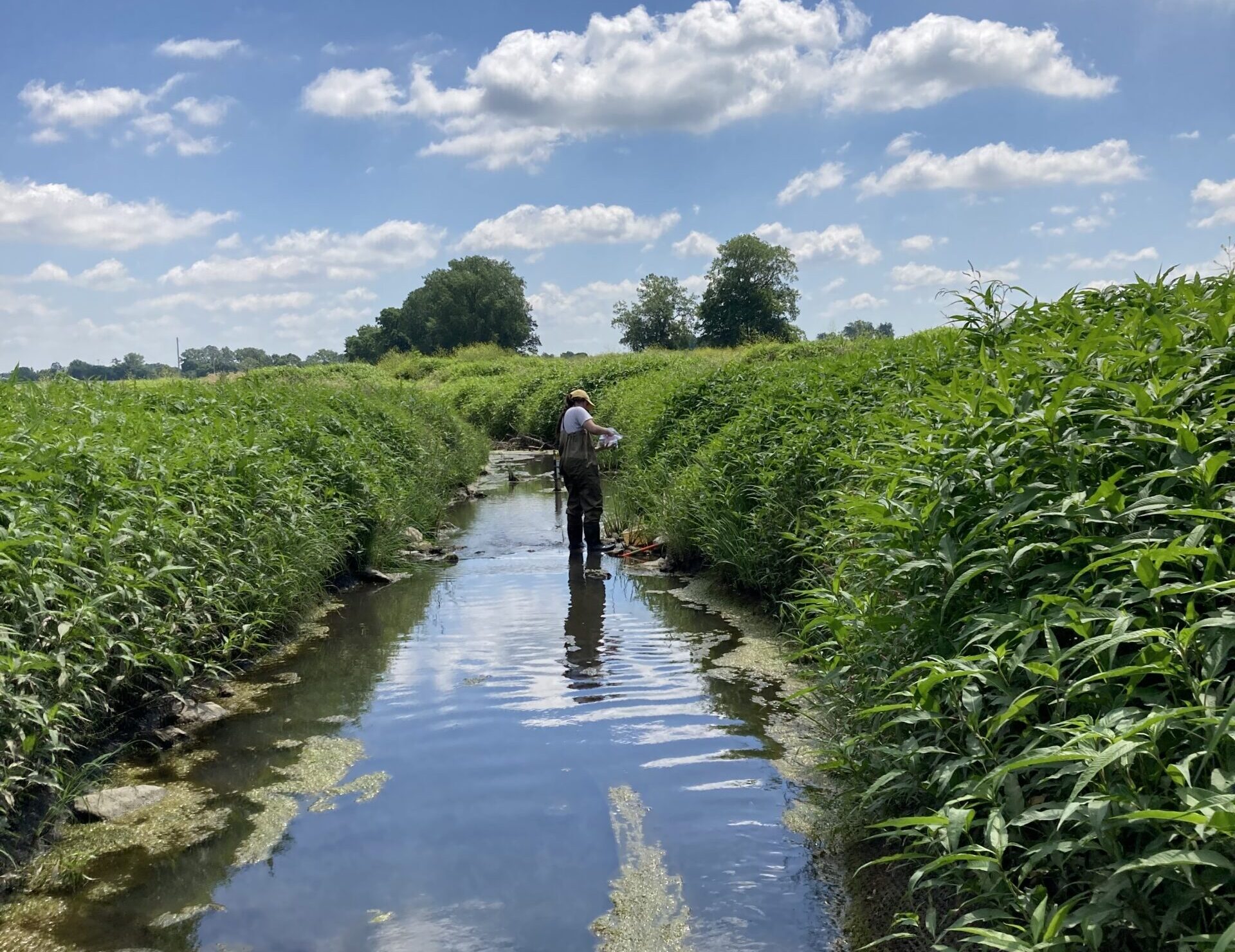Working Together to Build a Body of Knowledge around Streams and Wetlands
The Stream + Wetlands Foundation (S+W) will soon begin its 10th year as a proud partner of Ohio University’s Voinovich School of Leadership and Public Service (Voinovich School), which advances student research in watershed and wetlands programs. In addition to expanded research, our partnership enables the school to increase its academic support of the Master of Science in Environmental Studies and other programs with applied watershed and wetlands projects.
The Voinovich School integrates scholarship and hands-on learning to solve environmental problems. Support by S+W increases funding for talented students to gain practical experience with environmental research projects under the direction of faculty and professional staff. Much of their work focuses on the coal-bearing region of Ohio and specifically addresses the impacts of acid mine drainage (AMD) from abandoned coal mines.

The S+W Student Research Support Fund, a four-year commitment established at the school in 2015, provides funding for two full-time graduate students through the completion of their graduate studies. School officials have stated that the funds provided by S+W are “immensely important to our graduate students, providing the needed support for them to complete the program.” According to Matthew Roberts, senior director, Corporate & Foundation Relations at Ohio University—Office of Corporate Engagement, “The support from the Stream + Wetlands Foundation provides these students with practical and hands-on learning and is perfectly aligned with our environmental program’s focus—water.”
Through our partnership, students are provided the opportunity to be out in the field and actually make an impact. The stability of the four-year commitment by S+W is “absolutely essential to the successful completion of projects and to the school’s recruiting efforts,” said Jen Bowman, director of Environmental Programs at the Voinovich School. “Through our collaboration, we are building a body of knowledge around streams and wetlands which is significant, especially with the current lack of research on wetlands, especially in Ohio.”
To date, four Ohio University graduate students have received funding through this research support initiative. Their work ranges from examining the impact of invasive cattails on the wetland ecosystem and pollinator and prairie growth in the riparian buffer of the Hocking River to domestic wastewater treatment in rural areas not connected to a sewage system and analyzing water quality at S+W’s Bloody Run Swamp Site before, during and after construction.
In addition to supporting the Voinovich School through its research support grant, S+W is also funding a second graduate student who is leading the water quality data collection at the Bloody Run Swamp site that is located in Licking County, Ohio. This study is in conjunction with S+W’s recently completed restoration of the Bloody Run Swamp Site. The S+W project objectives included establishing more than 3,400 feet of natural stream channel that replaced a highly degraded and entrenched drainage ditch. This on-site portion of the Bloody Run stream is now connected and is engaging its floodplain, allowing water to access the 70+ acres of re-established wetland habitat.

The primary purpose of the students’ data collection and applied research is to determine how the S+W project has affected water quality. Since 2021, the students have collected water samples at the site, including pre- and mid-construction phases. They are currently in the final phase of their study—post-construction.
While their findings have not been published yet, they were able to identify a significant amount of “legacy” sediment and nutrients before construction began. This was not surprising since the most of the 3,200-acre watershed has been farmland for nearly 200 years. As part of their thesis research and in this last phase, the students are collecting water samples every two weeks and analyzing the samples in the school laboratory. “Not only has S+W provided a nice playground for our graduate students with this project,” said Sebastion Teas, environmental specialist – Water Quality, Voinovich School of Leadership and Public Service at Ohio University. “It is great exposure to what this type of work entails—a sort of practice round for those considering a career in this field.” The school also presents hands-on opportunities to undergraduates considering pursuing a master’s degree in environmental science or related programs.
In addition to collecting water samples, one student working on an Environmental Leadership Capstone in the Environmental Studies Department at the Voinovich School, Alexie McFarland, collected macroinvertebrate samples at the site. “Conducting macroinvertebrate sampling at Bloody Run is exciting for me as an undergraduate student as no biological data has been collected here,” she said. “Expanding my skill set with the team by learning more about water quality and soil collection is also important for me. I look forward to analyzing how macroinvertebrate population densities differ at each site, and eventually, further data can be collected to compare how the wetland is progressing.”
The students were also shown some interesting relics discovered by the S+W construction team. Excavation during the construction of the project revealed what appeared to be relic beaver dens that held numerous logs exhibiting telltale beaver teeth marks. Carbon dating showed logs pulled from one of the dens to be nearly 12,000 years old, or shortly after the end of the Wisconsin Glaciation period.
Most recently, Sebastian and the team saw the immediate benefits of the construction firsthand. Following a significant rain, they saw that the former crop field was completely flooded—clearly demonstrating that the re-established wetland is working as intended.
The re-establishment of wetlands on the project, a culmination of years of innovation and hard work, is aiding in improving water quality within the watershed, reducing flooding and providing greenspace and habitat for many years to come. Visit the S+W website to learn more about the history of the Bloody Run Swamp.

